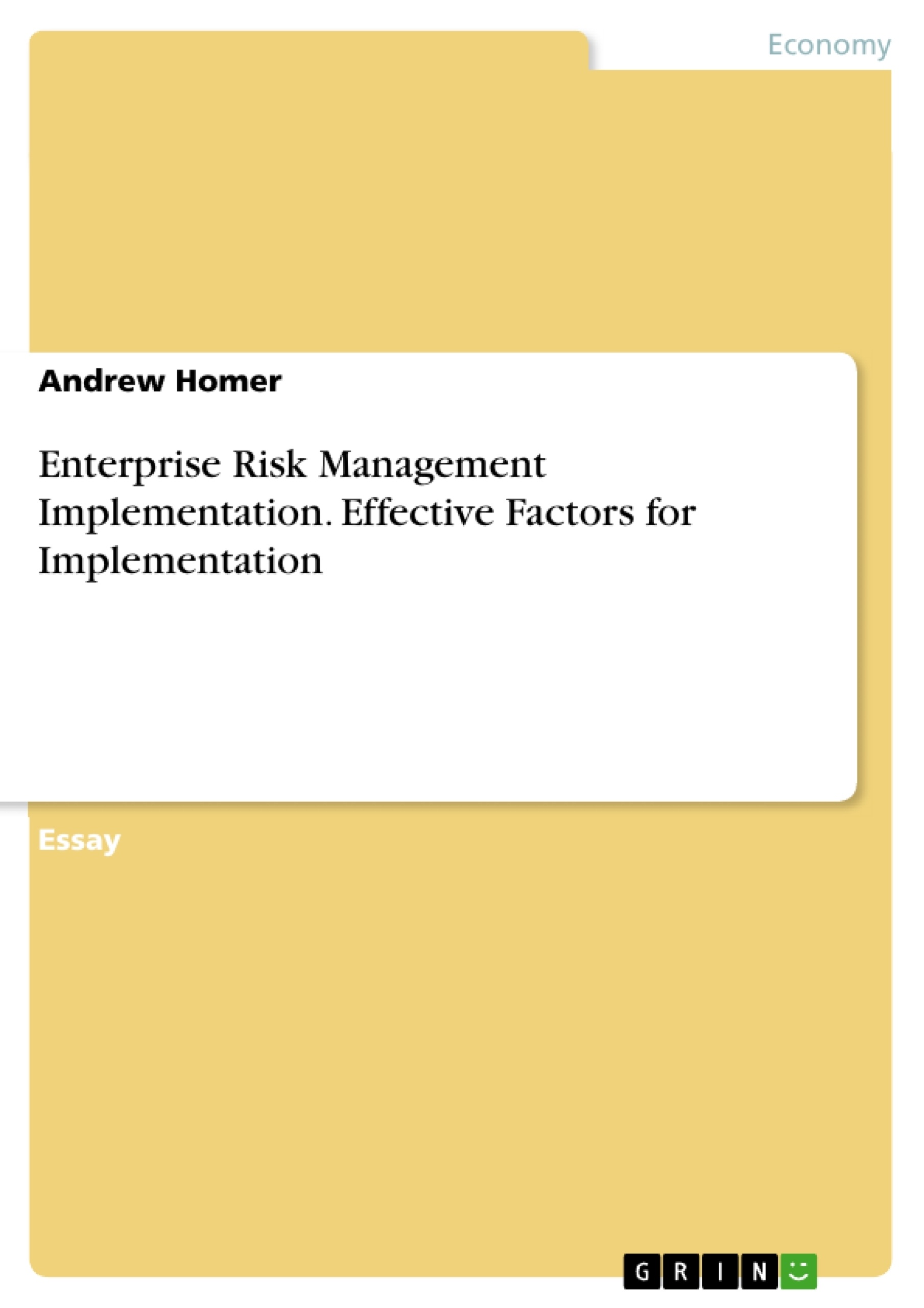This paper explores the challenges and considerations surrounding the implementation of Enterprise Risk Management (ERM) within organizations. The research delves into the evolving landscape shaped by technological advancements, global competition, and a volatile business environment. In response to these dynamic forces, organizations have increasingly recognized the importance of robust risk management practices, specifically ERM, to navigate uncertainties and create value.
While the benefits of ERM are acknowledged by many, the paper highlights a notable discrepancy between organizations actively adopting and effectively implementing ERM and those facing challenges or outright failures in its execution. The case of Countrywide Mortgage serves as a cautionary example, demonstrating that even entities previously lauded for effective ERM can face dire consequences, such as near-bankruptcy.
The paper suggests that the transition from Traditional Risk Management (TRM) to ERM is not a guaranteed formula for success. Some organizations experience significant increases in value with TRM, and the substantial financial investment required for a cultural shift towards ERM may not necessarily translate into strategic risk management. It emphasizes the pivotal role of organizational culture and the characteristics of individuals involved in ERM implementation as influential factors in determining success or failure.
The structure of the paper is outlined, including an executive summary, literature review, findings and conclusions, recommendations, and a reference section. The introduction provides a glimpse into the shifting landscape of risk management, setting the stage for a comprehensive exploration of the intricacies surrounding ERM implementation. The subsequent sections delve into a literature review, highlighting key concepts such as strategic risk, agency theory, and organizational culture in relation to ERM. The paper concludes with findings, recommendations, and implementation strategies.
Overall, the research aims to contribute valuable insights into the complexities of ERM implementation, offering recommendations for organizations to navigate challenges effectively and enhance their risk management practices in an ever-evolving business environment.
Table of Contents
Executive Summary
1 Introduction
2 Literature review
2.1 Enterprise Risk Management (ERM)
2.1.1 Strategic Risk
2.2 Agency Theory and ERM
2.2.1 Organizational Culture and ERM
3 Findings and Conclusions
4 Recommendations and Implementation
5 References
- Quote paper
- Andrew Homer (Author), 2016, Enterprise Risk Management Implementation. Effective Factors for Implementation, Munich, GRIN Verlag, https://www.grin.com/document/937200
-

-

-

-
Upload your own papers! Earn money and win an iPhone X. -

-
Upload your own papers! Earn money and win an iPhone X. -

-
Upload your own papers! Earn money and win an iPhone X. -

-
Upload your own papers! Earn money and win an iPhone X. -

-
Upload your own papers! Earn money and win an iPhone X. -

-
Upload your own papers! Earn money and win an iPhone X.

